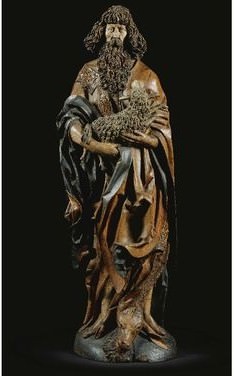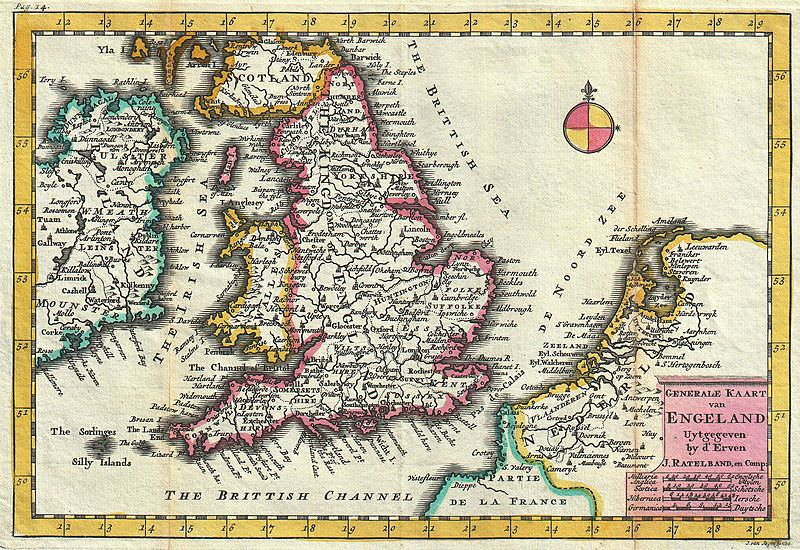Researchers puzzled as grave did not hold remains of medieval Swedish king
DNA tests have revealed that the bodies of nine people buried in the tomb actually died sometime between 1430 and 1520.
Who made Carlisle Castle’s carvings?
The mysterious wall carvings of Carlisle Castle’s Keep have always been thought to be the work of prisoners that were held captive there during its turbulent past. Some recent research by English Heritage, however, suggests some very surprising results.
Archaeologists uncover early Christian community in Norway
The cathedral in Stavanger was built in the year 1125, and is one of the earliest pieces of evidence for permanent settlement in the Norwegian town. However, new analyses of medieval skeletons found beneath the cathedral suggest that Christians lived in Stavanger for several generations prior to this.
Reconstructed Aberlady Cross unveiled in Scotland
A hand-carved reconstruction of an Early Christian cross has been unveiled in the Scottish village of Aberlady to mark the medieval pilgrimage route used by the monks of Iona and Lindisfarne.
Oldest surviving timber-framed house discovered in Ireland
Archaeologists in County Clare believe they have discovered Ireland’s earliest surviving example of a timber framed house.
Getty Museum Acquires Rare Late-Medieval German Sculpture
The Getty Museum were the successful bidders at auction for an extraordinary rare sculpture of St. John the Baptist dating from early 16th-century.
Humanities scholars study health, disease in the Middle Ages
What do the 2012 summer Olympics and medieval scholarship have in common? For both, London will be the site of extraordinary achievements.
Symposium on The Social Stigma of Disease: The Archaeology and Bioarchaeology of Leprosy
This symposium explores the social stigmatization of disease by considering the long-term history of leprosy: from the origins of the pathogen Mycobacterium leprae to the foundation of leprosaria in late medieval Europe to the creation of leper colonies in the 19th and 20th centuries.
Anglo-Saxon building discovered in Yorkshire
Building dating to the 7th century discovered in Yorkshire Dales National Park.
University of Bradford safeguarding skeletons using 3D digitisation
The University of Bradford has secured almost £750 000 to safeguard skeletons from world-renowned collections based in Bradford and London.
Christmas Cards with medieval images on sale from Bangor University
Cards show a miniature of a bishop consecrating a church, and the decorated opening page of a special Mass celebrated during the Christmas season.
Thirteenth-century Ivory of Virgin and Child sells for $8.5 million
An ivory of the Virgin and Child enthroned, made in Paris between 1250-1280, was sold at auction for $8.547.979 (US) earlier this month, a record price for a medieval art object.
Medieval records of the Church Courts of York now online
From arguments about church taxes on liquorice, roses and pigeon dung, to families disputing wills and inheritance, the records paint a vivid picture of the social, economic, political, religious and emotional world of people living in a period from the 14th to 19th centuries.
CastleVille – the latest video game craze
For millions of fans who wanted to command their own castle, the new game CastleVille is giving them the opportunity to do so – at least in the online world.
£200,000 goes to monastic sites in eastern England
The Heritage Lottery Fund is spending almost £200,000 on two projects for medieval monasteries in eastern England – the first two discover excavate the site of Ramsey Abbey and the second to promote Wymondham Abbey.
Medieval Archaeological finds reported at Tipton
Archaeologists from MetroMOLA (Museum of London Archaeology) have recently completed the excavation of a site in the West Midlands town of Tipton, which has yielded exciting new findings about the medieval origins of Tipton Green.
Anglo-Saxon bodies discovered in Warwickshire
When a Warwickshire couple were having their home extended the last thing they expected to find were bodies buried under the patio.
New book examines the medieval history of St Paul’s Cathedral
The past archaeological lives of the St Paul’s Cathedral site have been revealed in a new English Heritage book.
Moravian College to Host Conference in Medieval and Early Modern Studies
Moravian College will host the Sixth Annual Undergraduate Conference in Medieval and Early Modern Studies on Saturday, December 3
Gruesome murders to mythical beasts: Britain’s historic church wallpaintings now can be seen online
Earlier this month, the Churches Conservation Trust – the national charity protecting historic churches at risk – launched a brand new online resource providing an interactive guide to just some of the fine wallpaintings in its care
Regency Medievalism and the Early-Romantic Guitar
Professor Christopher Page, a celebrated musician and musicologist, will be coming to the University of Bristol on Thursday to give a lecture, entitled ‘Regency Medievalism and the Early-Romantic Guitar’, which will consider how the guitar, so favoured by amateur musicians among the nobility and gentry by 1830, came to be involved with a developing interest in the Middle Ages during the Regency period.
Article examines Edward III’s family ambitions
This month’s issue of BBC History Magazine features an article by Mark Ormrod that looks at how the English king Edward III tried establish positions of power for his various offspring and create what he calls a loose confederation among his sons that would rule over much of Western Europe.
First trailer released for Crusader Kings II
Paradox Interactive has released the first in a series of seven live action trailers for medieval strategy / RPG Crusader Kings II. The video features a ‘unique’ attempt to storm a medieval castle ;)
New project to examine immigration to medieval England
The study will create a huge database of around 80,000 immigrants who lived in England between 1330 and 1550.
Archaeologists discover major Pictish site
An excavation has revealed a fortified early medieval settlement and unearthed significant artefacts which position a tiny Scottish village as a seat of major political power and influence.


